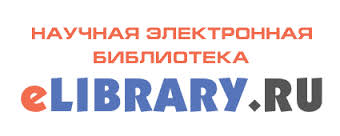Emotional Content of Non-Formal Interview Text in the Aspect of Respondent’s Reactive Utterances
Abstract
Margarita V. Ereshchenko (Rostov-on-Don, Russian Federation)
In the article according to the material of the informal interview texts, the respondents’ reacting utterances are analyzed, which are formulated in such a way that the final lexical segments differ significantly from the rest of the utterance content in terms of stylistic coloring and the emotionality of communication. In this case there is a so-called code-switching: for reproducing the humorous effect the reacting subject uses various versions of the language, in particular shifts the focus of the interviewer’s attention from the standard (literary) English to a particular regional or social dialect. Code-switching consists of the use of a specific lexical unit or expression that is markedly different from the rest of the lexical units (expressions) in the same utterance. The choice to use the mechanism of code-switching is determined in an informal interview by such pragmatic factors as the context and the topic of discussion, the interlocutors’ attempt to create a positive emotional mood of communication. Code-switching generates a humorous effect in the informal interview text, which subsequently determines the coverage of additional information interesting for the readership, the reimplementation of the code-switching mechanism, which creates a positive emotional atmosphere of the relaxed communication. The activation of this mechanism is based on the use of tokens with pronounced negative connotations in a strong position of the respondent’s reacting utterances.
Key words: non-formal interview text, respondent, emotions, codeswitching, humorous effect, double addressee.
DOI 10.23683/1995-0640-2019-2-60-67
References
Азарова О.А. Коммуникативные стратегии и тактики респондента и языковые средства их реализации в англоязычном неформальном интервью: дис. … канд. филол. наук. Ростов н/Д, 2013. 183 с.
Азарова О.А., Кудряшов И.А. Эмоции, язык, когниции: проблема взаимообусловленности в междисциплинарной перспективе // Междунар. науч.-исслед. журн. 2016. № 10-3(52). С. 6–9.
Гаврилова Г.Ф. Предложение и текст: системность и функциональность: коллективная монография. Ростов н/Д.: АкадемЛит, 2015. 412 с.
Коростова С.В. Эмотивность в диалоге и эмотивный диалог в русском художественном тексте // Вестн. Воронежского гос. ун-та. Серия: Лингвистика и межкультурная коммуникация. 2014. № 4. С. 92–97.
Коростова С.В. Эмотикон языковой личности в текстах современных масс-медиа // Изв. ЮФУ. Филол. науки. 2015. № 1. С. 77–87.
Котова Н.С., Кудряшов И.А. Лингвофилософская прагматика vs. когнитивная прагматика: два взгляда на одну и ту же проблему // Когнитивные исследования языка. 2016. № 25. С. 68–74.
Heat. 2016. April, 9. 101 p.
Hello. 2016. December, 19. 100 p.
People. 2017. October, 26. 86 p.
References
Azarova O.A. Kommunikativnyye strategii i taktiki respondenta i yazykovyye sredstva ikh realizatsii v angloyazychnom neformal’nom interv’yu: dis. … kand. filol. nauk. Rostov n/D, 2013. 183 p. (In Russian).
Azarova O.A., Kudryashov I.A. Ehmotsii, yazyk, kognitsii: problema vzaimoobuslovlennosti v mezhdistsiplinarnoy perspective. Mezhdunarodnyy nauch.issled. zhurn., 2016, no. 10-3(52), pp 6-9. (In Russian).
Gavrilova G.F. Predlozheniye i tekst: sistemnost’ i funktsional’nost’: kollektivnaya monografiya. Rostov n/D: AkademLit, 2015. 412 p. (In Russian).
Korostova S.V. Ehmotivnost’ v dialoge i ehmotivnyy dialog v russkom khudozhestvennom tekste. Vestn. Voronezhskogo gos. un-ta. Seriya: Lingvistika i mezhkul’turnaya kommunikatsiya, 2014, no. 4, pp. 92-97. (In Russian).
Korostova S.V. Ehmotikon yazykovoy lichnosti v tekstakh sovremennykh mass-media. Izv. YuFU. Filologicheskiye nauki. 2015, no. 1, pp. 77-87. (In Russian).
Kotova N.S., Kudryashov I.A. Lingvofilosofskaya pragmatika vs. kognitivnaya pragmatika: dva vzglyada na odnu i tu zhe problemu. Kognitivnyye issledovaniya yazyka, 2016, no. 25, pp. 68-74. (In Russian).
Heat. 2016. April, 9. 101 p.
Hello. 2016. December, 19. 100 p.
People. 2017. October, 26. 86 p.
Downloads
How to Cite
Issue
Section
License
Authors who publish with this journal agree to the following terms:
- Authors retain copyright and grant the journal right of first publication with the work simultaneously licensed under a Creative Commons Attribution License that allows others to share the work with an acknowledgement of the work's authorship and initial publication in this journal.
- Authors are able to enter into separate, additional contractual arrangements for the non-exclusive distribution of the journal's published version of the work (e.g., post it to an institutional repository or publish it in a book), with an acknowledgement of its initial publication in this journal.
- Authors are permitted and encouraged to post their work online (e.g., in institutional repositories or on their website) prior to and during the submission process, as it can lead to productive exchanges, as well as earlier and greater citation of published work (See The Effect of Open Access).


















